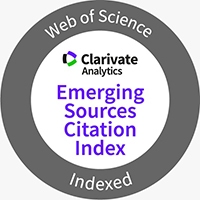A rare case of bilateral scrotal tuberculosis.
DOI:
https://doi.org/10.3941/jrcr.5479Abstract
Genitourinary tuberculosis is the most common extra-pulmonary manifestation of tuberculosis. Isolated scrotal tuberculosis involvement is, however, rare and is challenging to diagnose due to similar imaging overlap with multiple conditions.
We present a case of a middle-aged man who initially presented with painless swelling of his right scrotum, for which a scrotal ultrasound demonstrated an extra-testicular hypoechoic mass involving the epididymis. A right radical orchidectomy was performed due to concerns of malignancy; pathology demonstrated no evidence of malignancy but necrotizing granulomatous inflammation, with evidence of acid-fast bacilli on Ziehl-Neelsen(ZN) staining, in keeping with tuberculosis.
The patient was referred for anti-tuberculosis medical therapy but defaulted treatment and returned 2 years later with new painless swelling of his left scrotum. A repeat scrotal ultrasound demonstrated an enlarged left testis with multiple hypoechoic nodules. The patient was subsequently referred for direct observation of anti-tuberculosis medical therapy.
This case illustrates the ultrasonographic features of scrotal tuberculosis, and radiologists should be aware of this rare differential diagnosis of scrotal masses.
Downloads
Published
Issue
Section
License
Copyright (c) 2024 Journal of Radiology Case Reports

This work is licensed under a Creative Commons Attribution-NonCommercial-NoDerivatives 4.0 International License.
The publisher holds the copyright to the published articles and contents. However, the articles in this journal are open-access articles distributed under the terms of the Creative Commons Attribution-NonCommercial-NoDerivs 4.0 License, which permits reproduction and distribution, provided the original work is properly cited. The publisher and author have the right to use the text, images and other multimedia contents from the submitted work for further usage in affiliated programs. Commercial use and derivative works are not permitted, unless explicitly allowed by the publisher.





